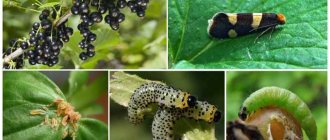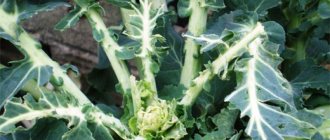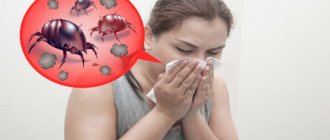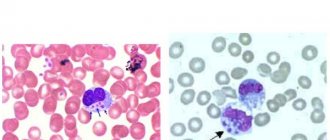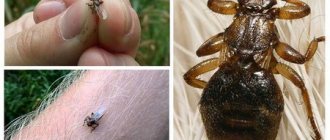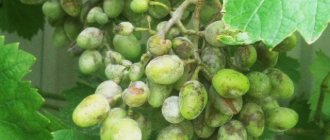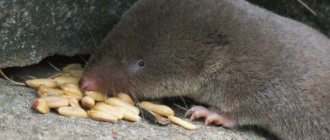Appearance, varieties and features
Argasid mites are the largest representatives of the family. Their length reaches 3 cm. They have a flat oval body with folds and without a shell, soft in appearance. Because of this, they are also called soft ticks. The mouthparts with sharp jaws and proboscis are located below. The tick has 4 pairs of limbs, on which it moves rather slowly.
Females are noticeably larger than males. The color of an individual depends on whether it has drunk blood or not. When hungry, argasid mites are gray in color with a noticeable border around the circumference. When the tick has drunk blood, it swells and becomes purple-purple in color. An adult can absorb 12 times more blood than its own weight.
In its development, a tick goes through the following stages:
- egg;
- larva;
- nymph of the first, second, third age;
- imago - an adult individual.
The female lays about a hundred eggs. Under unfavorable conditions, there may be more nymph stages. Typically, the process of turning an egg into an adult takes about a year, in poor conditions - up to two years. Argasid mites are parasitic starting from the larval stage.
Peculiarities
Argasid mites live up to 20 years, and can live for a very long time without food. Thus, an adult can survive without food for up to 14 years, and a larva can live in this state for up to 2 years.
Kinds
Argasid ticks are divided according to the blood of which animals and birds they prefer to feed on. For example, there are ticks that feed on blood:
- large and small cattle (Alveonasus lahorensis and Alectorobius Тholozani);
- chickens (A. Persicue);
- dogs and goats (Alect. Asperus);
- pigeons (Alect. Coniceps).
There are species that feed on the blood of various animals, including small rodents.
12 species of argasid mites (Argas and Ornithodoros) can attack humans.
Village ticks are considered the most dangerous. They can parasitize any vertebrate animals and humans.
General characteristics of argasid mites
Argasid ticks (family Argasidae) differ from ixodid ticks in the location of the proboscis on the ventral side of the body, the absence of scutes and festoons, the small size of peritremes, the absence of well-developed suckers on the legs, as well as biological characteristics.
As part of the argasid family of our fauna, there are two subfamilies: Argasinae (argasines) and Ornithodorinae (ornithodorines). Argazin has a flatter body, a seam and a welt run along its edge, and the discs are located predominantly radially. In ornitodorines the body is thicker, there is no suture or welt, and the discs lie non-radially.
The biological development cycle of argasid mites consists of the egg, larval, nymph and adult phases. Argasids (unlike ixodids) have from 2 to 7 nymphal phases, depending on the living conditions of the ticks. Under favorable conditions, the life cycle can be completed in a few months, but usually it drags on for years. Typically, egg laying and molting occur outside the host. Females of many species lay eggs repeatedly, mainly after feeding. The larvae hatch from the eggs in about a month and, after drying out, are capable of attacking animals.
The body of Argasid mites is oblong, narrowed anteriorly, and less often rounded. Hungry ticks are flattened, while well-fed ticks swell significantly. Length from 2 to 13 mm. Coloring is grayish and brown tones, matching the color of the soil in their habitat. The cover is leathery, extensible, there are no hard scutes; There are folds and grooves, due to which the volume of the body increases when saturated with blood. On the abdominal side there are the excretory ducts of the coxal glands, the genital and anal openings, peritremes, and limbs.
Nymphs differ from adults in the absence of a genital opening. The larvae have an almost round body, with three pairs of limbs; the proboscis protrudes beyond the anterior edge of the body. Males differ from females in their somewhat smaller size and semilunar shape of the genital opening; in females it has the shape of a transverse slit. Argasids of our fauna do not have eyes
The main and most important feature of argasids is living in closed shelters. Within its range, each species inhabits its favorite types of shelters: ground burrows of small mammals, birds, reptiles, caves, nests on rocks, trees, in human and animal buildings. Therefore, argasid ticks are called burrowing, coarse or shelter bloodsuckers.
Argazids are in most cases indiscriminate in their diet and are able to feed on reptiles, birds, and mammals, including humans. This is explained by the impossibility of choosing a host when living in a closed shelter, which limits the search for a host. Argazids, as a rule, are saturated with blood within a few minutes, rarely feeding for more than 1 hour. Argazids are capable of fasting for a long time (years) in all active phases of development. They have a widespread ability to satiate themselves with blood from well-fed individuals of their own or another species (cannibalism, omovampirism). This is one of the possible ways for microorganisms to spread within the vector population, bypassing vertebrate hosts, which increases their epidemiological and epizootological danger.
Argazids are found in all parts of the world. In our country they live in the southern regions from the western to the eastern borders. Ornithodorins are concentrated in Central Asia, Kazakhstan, the North Caucasus and Transcaucasia, mainly in desert and semi-desert zones, less often in the steppe zone, only a few species enter the forest-steppe and quite high into the mountains.
Among the numerous species of argasid mites, two species are of greatest veterinary importance: Argas persicus and Alveonasus lahorensis.
Argas persicus (Persian tick) subfamily Argasinae; The body of a hungry tick in the imaginal phase is flat, ovoid, somewhat narrowed anteriorly, framed along the edge by a well-defined welt of marginal lobules. The body color of hungry ticks is grayish-yellow, of well-fed ones - dark lead or purple, dimensions (4...10) x (3...6) mm. The legs are located in the anterior half of the ventral surface of the body, the front two pairs are directed slightly forward, and the hind ones are directed back.
Ticks live mainly in bird houses, where they hide in crevices and cracks of walls, pillars, ceilings, perches and nests, under plaster, in bark cracks and tree hollows used by birds for roosting, as well as in the burrows of wild animals.
They feed mainly on chickens, less often on other birds, and sometimes on farm animals and humans. They usually attack at night. Adults and nymphs suck blood for 0.5–2 hours, and larvae for 4–11 days. Ticks stick mainly in places poorly covered with feathers - on the back of the head, neck, under the wings, on the inner surface of the thighs, and in case of intensive infestation - on the entire body. The larvae, remaining on the host's body, are found in the form of scattered dark gray grains or groups (mostly under the wings).
Nymphs feed once, adults - repeatedly, laying eggs (30-100 each) one to two weeks after the next saturation. The development time of one generation ranges from 3 to 32 months and is determined by the number of nymphs (from 1 to 4) and diapauses, manifested in delayed molting or oviposition, which depends on the natural and climatic conditions of the habitat.
The range of Persian ticks extends from 5 to 54° north latitude and south to the equator. In the CIS it is found mainly in the southern regions: in Ukraine and the North Caucasus, Transcaucasia, Central Asia, Kalmykia, Astrakhan region and Kazakhstan. Found in the mountains at an altitude of 1880 m above sea level.
The predominant season for parasitism occurs in the warm season. Ticks can attack in warm rooms even in winter. The best conditions for mite brood are created in primitive poultry houses (clay, adobe, reed, wooden, etc.). Ticks can be introduced with equipment, new numbers of birds, and also through synanthropic birds.
- A. persicus is a carrier of pathogens of spirochetosis, aegyptianellosis, cholera, typhoid, tuberculosis and bird plague, is a carrier and reserve of pathogens of brucellosis, typhus and yellow fever in humans, etc.; often causes tick-borne toxicosis in birds (argasidosis).
Penetrating the skin of the bird, the proboscis breaks the blood vessels. Tick saliva causes expansion and increased permeability of capillary walls. Bruises (hematomas) form and an inflammatory infiltrate forms
Persian ticks are bloodsuckers. They bleed the bird and cause intoxication. Clinically, this is manifested by depression, decreased egg production, anemia, exhaustion, and in the last stages of the disease - impaired coordination of movements, paralysis and death. Chickens are especially seriously ill - death can occur on the 5th-6th day.
Lymphopenia with a shift to the left is noted in the blood of sick birds. In the stage of tick paralysis, the content of lysozyme in the blood serum decreases sharply, and the glucose content increases. The acid-base balance is disrupted, accompanied by an increase in the content of carbon dioxide in the blood, which contributes to the development of respiratory acidosis and leads to functional impairment of organ activity.
Diagnostics. The diagnosis is made based on symptoms of the disease and the detection of mites on the bird and in the room.
Treatment. Symptomatic. In individual farms with small numbers, poultry are treated with dusts of chlorophos (7-10%), sevin (7.5%), etc. They are applied using two-layer gauze bags. Dust consumption is 5-15 g per head depending on the age of the bird. Dusts can also be used for sand baths (1 part dust and 3 parts sand), which ensures self-treatment of the bird. Sand baths are changed as they become dirty.
To destroy ectoparasites indoors, wet treatment is carried out using DUK, VDM, LSD and other units that provide fine-droplet spraying of acaricidal liquid. The bird is removed, the internal surfaces of the room and equipment are treated. Particular care should be taken to spray the habitats of ectoparasites - crevices, cracks in cell batteries, perches and other equipment.
ore mining. This is a preliminary treatment, a day after it the room is ventilated, the equipment and equipment are cleaned and washed, after which everything is re-treated with acaricides.
For decontamination of poultry houses the following are used: benzophosphate (0.5%), karbofos (0.25-0.5%), cyodrine (1%), dursban (0.5%), diazinon (1%), chlorophos (1-2 %), DDVF (0.25-0.5%), dibrom (0.5-1%), sevin (3-6%), dicresyl (0.25-0.5%), cymbush (0.1 %), decis (0.1%), ragadan (0.5%), etc. Working concentrations of drugs are prepared based on the active substance (AI) and apply 100-200 ml per 1 m2 of surface. As a rule, treatment is carried out twice with an interval of 1 to 4 weeks, which depends on the drug (for most, their interval is 2 weeks), on the type of ectoparasites and the ambient temperature, since the latter affects the duration of development of parasites (ticks, insects, their eggs).
Birds are introduced into the treated room only after evaporation of the acaricidal (insecticidal) liquid and ventilation, but not earlier than one day after treatment. Before introducing birds, nests for laying hens, cage battery nets, feeders, drinkers and conveyor belts for feed and eggs are treated with a 3% solution of soda ash.
To treat poultry houses when it is impossible to remove birds, in all cases of combating ectoparasites, the following rules are observed: feeders are first emptied of feed, drinking bowls are first emptied of water; poultry houses are processed section by section after collecting eggs; 3-4 hours after spraying, feeders, drinkers and nests for laying hens are neutralized with a 3% solution of soda ash; during processing; battery cages with a suspension of Sevin, chickens up to 90 days of age are transferred to another room
Harm from the argas mite to humans
Argas mites attack livestock and poultry, causing their death. They also carry dangerous diseases.
A tick bite hurts. The bite site turns red and itches. Allergic reactions occur because when a tick bites, it injects saliva that has a toxic effect. A papule filled with bloody fluid forms at the site of the bite.
A person can become infected after a tick bite with the following diseases:
- borreliosis;
- relapsing fever;
- hemorrhagic fever.
These diseases are the most common, but argas ticks can also carry other infections. If you find a tick or bite, you should consult a doctor as soon as possible and begin treatment.
Argasid mites attack people in the absence of other food, so there are not many cases of disease infection from this type of mite in humans. They pose a much greater danger to animals.
How to handle animals
Ticks attack animals in the autumn-winter period, when larvae form from eggs, or larvae turn into nymphs.
Before processing the room where animals are kept, it is necessary to seal all cracks, holes, and holes. Animals are removed from the premises. They are used in processing;
- 1.5% chlorophos solution;
- benzophosphate solution;
- a mixture of chlorophos and DCVP (“Aerol2”).
For the purpose of prevention, animals are treated with acaricidal drugs. But acaricides are useless for sick animals. Veterinarian assistance is needed.
Watch this video to learn about all the dangerous types of ticks:
Danger to animals
The danger to livestock and poultry from tick bites is much higher. Tick attacks can be widespread and cause entire epidemics. Animals develop fever and even paralysis.
Symptoms of infection in pets:
- excitation;
- constant itching;
- slight trembling throughout the body;
- increased heart rate;
- dilated pupils;
- increased salivation and foaming at the mouth.
If no treatment measures are taken, the animal dies within 2 to 4 weeks.
Most often ticks attack in winter. At this time, the mite larvae emerging from the eggs become active and begin the feeding process.
Fighting methods
Argasid mites are also called ticks in waiting. They hide in secluded places - various crevices, small cracks, holes, where they wait for their prey. To protect animals and birds from pests, it is necessary to promptly treat the premises where they are kept. Moreover, all surfaces must be carefully treated, including cracks and crevices in the floor, walls, and ceiling. For treatment, it is necessary to use products with insectoacaricidal and disinfectant effects based on benzophosphate, chlorophos, and aerol. Before treatment, animals are removed from the room; after treatment, the room must be ventilated. The livestock is treated with acaricidal agents approved for use on animals. If there are already pests on the body, then they must be removed.
Birds and their habitats are treated with dust. It is necessary to treat the poultry house, perches, and surrounding area. It is imperative to eliminate potential tick habitats - cover all cracks and cracks.
To treat livestock, poultry and premises for keeping them, you can use cypermethrin-based anti-ectoparasites, for example, Ectomethrin from MediLis. They can also be used on dogs.
Ways to fight
Animal protection
Before starting treatment of contaminated premises where animals are kept, it is necessary to carefully seal all cracks, crevices and holes. Then the surfaces are sprayed with insecticidal solutions (all animals must be removed). Walls, ceilings and fences are carefully treated.
Drugs used:
- 1.5% chlorophos solution;
- benzophosphate solution;
- a mixture of chlorophos and DCVP (“Aerol2”).
After disinfestation, the handler leaves the room and after a couple of hours ventilates it well. After all the activities have been completed, the animals can return to their stalls.
The animals themselves can be treated with special acaricides. However, these products are used exclusively to prevent attacks by argasid mites. If there are parasites on the body, the use of acaricides is useless. In addition, it should be borne in mind that at high air temperatures these drugs can provoke toxicosis. This happens especially often when treating young and pregnant individuals. And in order to prevent this condition, it is necessary to apply acaricide to the body of animals in the evening, when the room becomes cooler.
Bird protection
When chicken mites appear, all poultry must be treated with 2% chlorophos dust or 7.5% sevin dust - about 5 g of the drug will be needed per individual, after which all attached pests are removed from the body.
Then the infested chicken coops are carefully inspected and all cracks and crevices in which argas mites may be hiding are immediately treated. If necessary, these places are first opened and only then a 0.25% suspension of Sevin is added. After treatment, the cracks must be sealed. Next, the nests and wooden elements located in the chicken coop are taken out in parts and washed thoroughly with hot water. All damaged parts must be lubricated with spindle or solar oil.
Advice! It is recommended to carry out disinsection in poultry houses after the onset of cold weather, because it is at this time that mites move to warm rooms!
Treatment of the surrounding area
After the animals and premises have been completely processed, an inspection of nearby plants and buildings nearby should be carried out. If parasites are found on trees, their bark must be sprayed with hexachlorane.
The external walls of the foundation and fences must also be inspected, all existing cracks and crevices must be immediately sealed, and then the surfaces must be treated with acaricides. Spraying is carried out two or three times, since in one treatment it will not be possible to destroy all the individuals hiding in the depths of the cracks. In addition, these parasites can go into the soil, and their exit from the substrate occurs gradually. Therefore, acaricides must be used periodically for two to three years.
Plus, it is advisable to remove garbage from the yard and carry out deratization work that will eliminate small rodents.
Prevention
If the farm is located in a potentially dangerous area where argasid mites are found, periodic preventive treatment of the surrounding area and premises is required. It is believed that pests move into shelters with the onset of cold weather. It is at this time that inspection of such places will be effective.
Prevention is as follows:
- cleaning the area from debris in which ticks may be hiding;
- control of rodents that can be carriers of ticks and their larvae;
- sealing cracks in buildings and structures, treating them with acaricides;
- spraying bushes and trees located next to animal and poultry premises with hexachlorane;
- a careful inspection of the territory, buildings and animals to detect ticks - they are large enough, they can be seen without special devices.
All processing must be carried out in protective clothing and in compliance with safety precautions. After treatment, thorough ventilation of the premises is necessary.
To protect yourself from tick attacks, a person needs to use repellents, for example, MediLis-Comfort.
Life cycle of argasids and some nutritional features
In the large family Argasidae, the development of its members is quite complex, with several nymphal stages and multi-host conditions. This developmental pattern is similar to most other tick families, where the normal sequence of developmental stages includes a larva, four nymphal stages, and an adult. Female argasids, unlike, for example, ixodids, live for many years, feed repeatedly, and lay eggs after each blood feeding. Scientists would say they have several gonotrophic cycles.
Among other things, the life cycle of argasid mites is characterized by several larval molts. Almost all species have multiple hosts, one for each stage of the cycle. Most adult ticks attack mammals and birds, excluding bats. Due to their relatively high speed of movement, tick larvae quickly find hosts, also feed quickly (15-30 minutes) and fall to molt in the sand, litter, cracks and crevices in their natural habitat.
After the larvae enter the first nymphal stage, the nymphs will resemble miniature adults in almost all appearance characteristics, especially the leathery body cuticle. However, they lack the genital pore, in fact, like no other signs of sexual dimorphism. Nymphs of the first stage also attack their hosts, quickly take a portion of blood, and then hide in a secluded place.
An important factor that allows nymphs to quickly find hosts and feed is their ability to eliminate excess water from the blood plasma using a special coxal fluid - a clear, colorless substance secreted by the coxal glands during or shortly after feeding. As a result, parasites do not require a large volume of blood, and the digestive system does not require many resources for digestion.
After feeding, the first stage nymphs molt again, move into the second stage, repeat their feeding, then molt into the third stage and so on. At all nymphal stages, the intermediate hosts are the same - mammals and birds. Some argasid species undergo five, six or even 7 nymphal molts before they reach the adult stage. The highest recorded number of nymphal stages is eight.
This family of mites has one unique feature. The number of nymphs is inconsistent, even within the same species. Nutritional factors, especially the volume of blood taken in previous stages, are believed to be an important indicator of the number of nymphal stages. Additionally, males tend to emerge as adults earlier than females, meaning they require one or two fewer nymphal stages than females.
This greatly distinguishes Argazidae from the family of well-known ixodid ticks. In addition to having a longer life cycle, many species of argasid mites can withstand long periods of starvation during development, so that the life cycle can be extended over many years.
Adults become sexually active immediately after emerging from the last nymphal moult and do not require blood to begin gametogenesis. Mating occurs before and also after blood feeding, but the second condition is observed much less frequently, except in the situation when the male and female meet on the body of their owner. However, the gonotrophic cycle is completely dependent on blood intake, except in those rare cases in which mated females lay eggs autogenously, that is, absolutely without feeding.
As in the genus Ixodes, hungry females usually do not lay eggs, even if they mate with males. After feeding and fertilization, the female begins laying eggs in small batches containing several hundred eggs per batch. Once oviposition is complete, the mites remain energetic and the hungry females then seek out hosts, feed, and lay eggs again.
The number of gonotrophic cycles varies considerably between individual mites within a species, as well as between species, although the number rarely exceeds six. This pattern of repeated gonotrophic cycles is often observed after long periods of waiting between blood draws and allows argasid mites to prolong their genus gradually over time, often over a period of many years. The Argasian strategy is very different from the Ixodid one, where all the offspring of a female are laid once during her entire, maximum, two-year life.
Diapause is a major factor regulating the developmental timing of many species of argasid mites, which must survive in empty burrows or nests until their hosts return or new ones arrive.
Thus, Argas mites are one of the most advanced representatives of their class. Nutritional features, long life, and the ability to survive without a portion of blood for many years, up to 11 years, allow these parasites to be several levels higher than their neighbors in the genera.


